Once the decision has been made that Yes!
You are ready to welcome a child in your family, getting pregnant is perhaps one of the most flashing thought that keeps you occupied 24/7.
The surge of hope, disappointment and excitement from the time of planning to conception is usually overwhelming yet, it could also be exhaustive.
Given the large number of negative factors that are grossly affecting women health, delayed or failed pregnancies are more frequent and no less than a havoc on your physiological, mental, emotional status.
In this perspective to understand how to get pregnant fast and successfully, knowing your body inside out would help you to rectify the prevailing hormonal imbalances.
This current article briefs you about the simple yet promising strategies that can be employed to attain a rapid, successful, healthy and complication-free pregnancy.
The most striking and primal cause of compromised reproductive health in women is perturbations in the levels and activity of “Hormones” and this phenomenon is often referred to as “Hormonal Imbalance”.
Hormonal imbalance in women evident as
• Declining female reproductive health (adverse post menopausal effects and enhanced risk of poly cystic ovary syndrome, breast cancer, ovarian cancer) [1, 2]
• Inadequate weight gain or Obesity (obesity related hepatocellular carcinoma, cardiac risks metabolic and reproductive disorders) [3, 4, 5]
• Metabolic disorders (diabetes) and several other such adversities are direct consequences of perturbations in hormonal levels/ activity within the human system in response to environmentally persistent chemicals (xenobiotics) that enter the body through contaminated food, water or detrimental lifestyle factors [6].
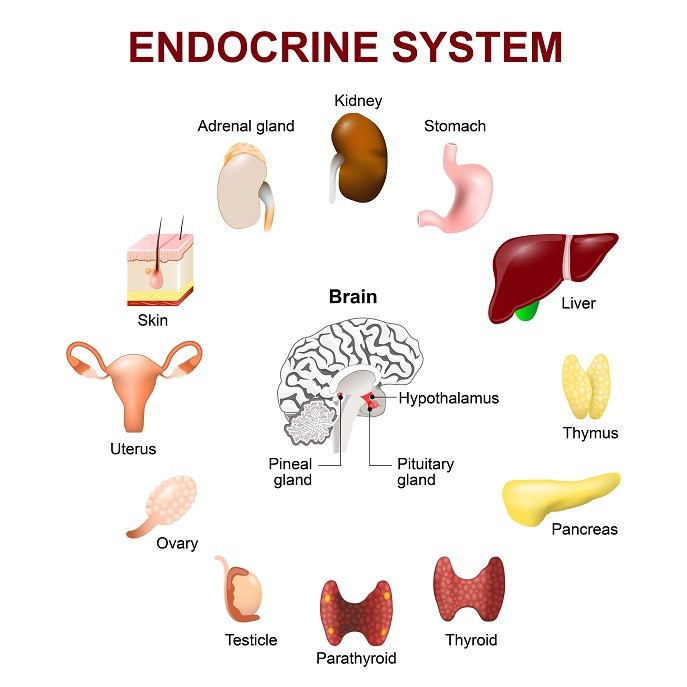
Hormones are products of endocrine secretion that serve as chemical messengers or signalling molecules, transported through bloodstream to target organs where they bind with specific receptor proteins on target cell surface and alter the cell function, regulating and coordinating the physiology and behaviour of an organism on the whole.
Structurally they span three classes:
• Eicosanoids (oxidized polyunsaturated fatty acids)
• Steroids (lipid cholesterol), and
• Amino acids/ Protein derivatives (amine, peptide, and protein).
Functionally they regulate extremely diverse array of errands within the human system depending upon the target organ and their binding sites
• Growth and Development
• Reproduction
• Storage and consumption of Energy
• Ionic balance of the body fluids and Water Retention
• Metabolism of Carbohydrates, Proteins and Fats
• Regulation of Heart rate and infinite functions likewise.
Factors affecting women health or threat to female health owing to hormonal imbalances include
(i). Environmental factors

• Toxic pollutants in air (peroxy acyl nitrates and other secondary pollutants), and contaminants in water (metabolised products of industrial effluents, metals, therapeutic drugs or washed off contaminants from chemically fertilised fields)

• Use of harmful chemicals in products of daily usage (as phthalates- DBP, dibutyl phthalate and DEHP, diethyl hexyl phthalate, in body care, cosmetics [7, 8], emulsifiers in soaps, contraceptive pills)
• Presence of industrial pollutants, or their metabolites that have tendency to mimic the primary sex hormones, oestrogen and progesterone activity in women (referred to as Endocrine disrupting chemicals [9,10] as parabens and phthalates) are the issues of global concern and need a joint effort at a massive scale at an international platform.
But, the factors that have an equal contribution to the deteriorating female health and unbalanced hormonal optima of the body, those which can be controlled, rectified and amended at an individual level are the “Lifestyle Determinants”.
(ii). Poor lifestyle factors that have adverse effect on the optimal female health include:
• Unbalanced nutrition: Diet with higher monounsaturated to trans fat ratio, vegetable over animal protein, decreased glycemic load have been found to be associated with minimised risk of infertility, hormonal and ovulation disorders in women.
• Physical inactivity and Obesity: Women with BMI over 30 face several hormonal disorders [11] and pregnancy related complications. In addition to this inactivity, overweight and obesity are linked with depression and anxiety.
• Physical or psychological Stress: Stress, anxiety and depression, be it physical, social, or psychological affect the varied aspects of homeostasis in women.[12] Can you see how the last two points made could contribute to create a very unhappy, and vicious cycle?
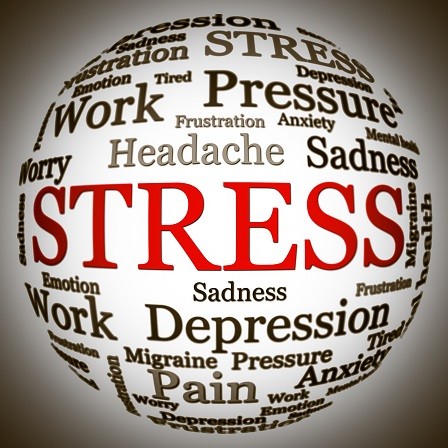
• Smoking: Perturbed levels of Follicle stimulating hormone, disruption of endocrine functions evident in menstrual dysfunction and infertility in women are some of the most striking effects of smoking reported in females.[13]
• Alcohol consumption: Higher consumption of alcohol mediate hormonal fluctuations, elevated levels of oestrogen reduce the FSH levels, which result in low folliculogenesis and ovulation in females.[14]
• Excessive caffeine consumption: Consumption of more than 375mg of caffeine was found related to higher rates of spontaneous abortions, fetal mortality and stillbirths in women.[15]

Drug Abuse, usage of Illicit, recreational, or prescription drugs: Use of recreational drugs as Marijuana, cocaine negatively impact the hormonal levels, as Luteinizing hormone in women. Such drugs are associated with retarded fetal development, still births and placental anomalies.[16]
Significance of hormonal balance and effect of their imbalance in women
Balanced hormonal secretion and activity are the key to organismal homeostatsis, and any factor that disturbs the ideal state of hormone release, function and activity triggers adversities in target organs.
To brief the hormonal network in women,
• Secretion from pituitary gland (TSH, thyroid stimulating hormone) stimulate the release of thyroid hormone from thyroid glands. Perturbations in TSH levels affect T3/ T4 levels and activity.
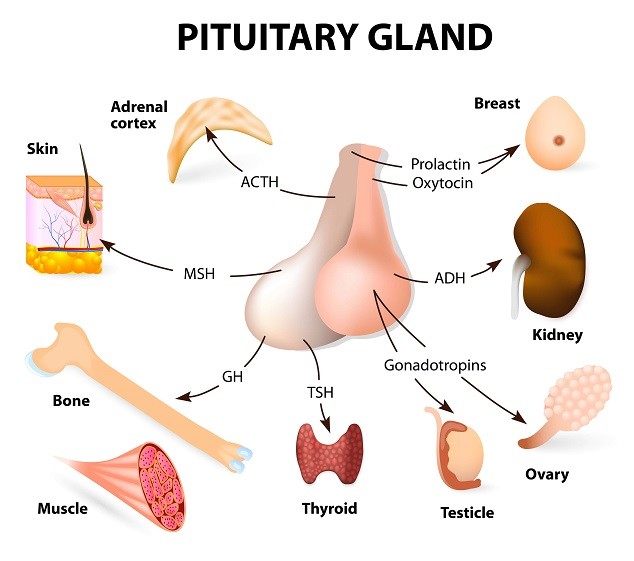
Thyroid glands release T3 (Triidothyronine) and T4 (thyroxine) hormones that regulate massive array of vital body functions, including heart rate, body weight, cholesterol levels, menstrual cycles, body temperature and many more likewise.
Thyroid imbalance results in disturbances in menstrual cycles in terms of missed or heavy periods, anxiety, sensitivity to high/ low temperature, insomnia (loss of sleep), muscular pain.
Obesity, i.e uncontrolled weight gain is another concern associated with improper thyroid functioning, which culminates as a root to several other medical conditions.
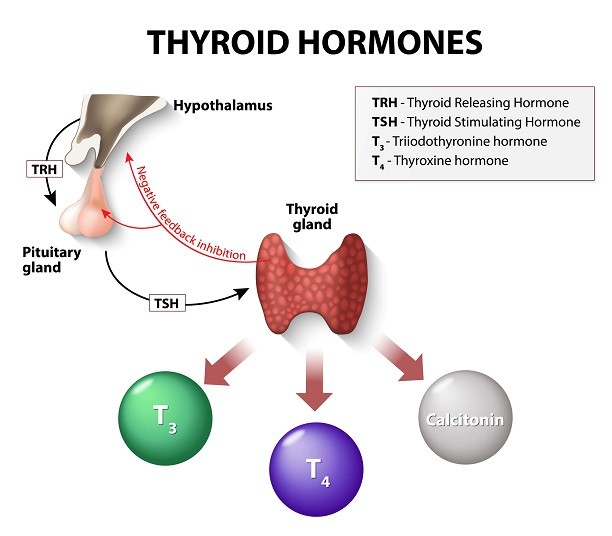
• Parathyroid release parathormone that regulates bone remodelling. Imbalance results in bone disease, reduced levels of Vitamin D that interferes with Ca2+ absorption/ assimilation in body resulting in weak bone density in women.
• Hypothalamus is the master-gland that connects endocrine system to nervous system and releases various hormone releasing factors that stimulate release of hormone from pituitary.
Growth hormone releasing hormone, gonadotropin releasing hormone that stimulates pituitary to release growth hormone or gonadotropins as FSH (follicle stimulating hormone) and Leutining hormone (LH).
Therefore hormonal imbalance in such releasing factors directly inhibit the body temperature, body fluid levels, growth and development in women.
Several other parameters related to pregnancy, labour and lactation are equally affected in women with altered hypothalamus secretion.
• Pancreas secrete glucagon and insulin that regulate glucose metabolism.
Diabetes is the condition that arises from high blood glucose level due to insulin insufficiency or inactivity.
Diabetes in women is usually symptomised with vaginal infections, excessive thirst, frequent urination, delayed healing of wounds and unexplained loss/ gain of weight.
• Adrenal cortex-medulla release mineralocorticoids and glucocorticoids that regulate the ionic and fluid balance of the body. In addition they also release the stress hormones- epinephrine and norepinephrine.
In women, the perturbations in hormonal levels lead to cushing syndrome (hyper production of cortisol in pregnant women and athletes), addison disease (low levels of cortisol), adrenal gland tumours, mood swings, poor stamina, low sexual drive and excessive fatigue
• Ovary produce Oestrogen and progesterone that control secondary sexual characteristic development at the time of puberty, and ensure fertility by the proper development and functioning of female reproductive system.
Disorders associated with fluctuating sex hormones in females include ovarian cysts, ovarian cancers, menstrual cycle disorders, poly cystic ovary syndrome/ disease (PCOS/ PCOD).
Besides, estrogen dominance reflects greater body fat content that not only marks obesity but also infertility in women.
Restoration of hormonal balance requires disciplined and consistent effort to get the fluctuating levels back on track.
Adequate balanced nutrition and physical activity for weight management are the two most potential approaches that resolve majority of the hormonal imbalance effects and concerns.
Nutrition that includes essential fatty acids (omega 3 fatty acids) and low carbohydrates, proteins, minerals, vitamins, antioxidants, fibers, whole grains can not only maintain the hormonal optima but can also restore the fluctuating levels back to normal [17,18].
Weight management is another crucial factor for restoration of hormonal balance.
Uncontrolled weight gain, evident in the form of greater body fat worsens majority of adversities.
Physical activity not only keeps a check at inadequate weight gain but also facilitates detoxification of excess hormones from body, minimises stress and depression, enhances circulation, and restores lost stamina by strengthening muscles [19,20].

Hormone replacement therapy in women is carried out to relieve the menopausal symptoms.
It involves administration of threshold levels of estrogen to the compensate for otherwise extremely low levels of estrogen in menopausal women suffering from hot flushes, mood swings, vaginal dryness, night sweats.
It is a therapeutic approach to balance the reduced levels of female sex hormone, and thereby to mitigate the discomfort arising from it.
Join This Personalised Personal Training Program If You Are Keen to Reduce the Risk of Hormonal Imbalance
If environmental factors are set aside with a cautious approach and outlook, healthy mode of lifestyle is the only route to keep the body parameters at their optimal state.
Customised, balanced diet, proper sleep, good water intake, abstaining from alcohol, smoking, and illicit drugs, physical activity/ exercise for the adequate weight management alonside motivation and inspiration from an elite personal trainer will help achieve the sound hormonal health and body fitness.
But knowing the solution and adhering to the strict mandatorial regimen in busy schedules are two different aspects.
In this respect, personalised and individual customised training programmes with very effective and varied options do wonders.
Keen to start to get your hormones in balance?
Claim now your FREE CONSULTATION by clicking on this link, here.
• Women in current scenario are struggling with variety of issues, body fat, depression and anxiety, hair loss, skin problems as acne and discolouration patches, mood swings, lack of energy and stamina, low libido, menstrual and fertility issues.
Finely customised personal training programmes perfectly understand the health crisis and requirement of the system, generate awareness to importance of healthy lifestyle and cons of unbalanced poor lifestyle, coming up with the best possible natural and harmless solutions to deal with these particular problems. [21,22]
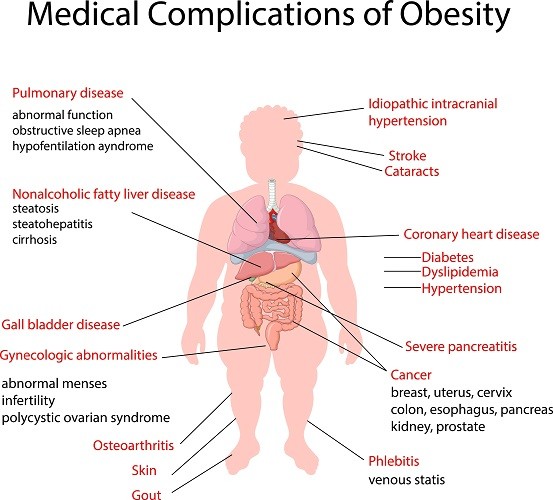
• The individuals are provided with best counselling/advices that not only help to directly work on the issue but also keep track of individual’s progress.
• Diet chart based upon the individual’s requirement and exercise regimen help burn extra body fat, elevate stamina and build lean muscles.
• Customised elite personal training programmes follow the holistic approach to deal with stress which is root to majority of imbalances by exercising powerful mind techniques.
• Such programmes keep the clients accountable to trainer, that makes the improvement and restoration of imbalance pretty much guaranteed.
Keen to start to get your hormones in balance?
Claim now your FREE CONSULTATION by clicking on this link, here.
Since the activities under the direct regulation of exercise as breathing, heart rate, and so on fall into the involuntary control of autonomic nervous system (sympathetic and parasympathetic), customised elite personal training can be modelled in the best way as to harness the maximum efficacy of the autonomic system harmonising the entire niche of coordinated bodily functions.
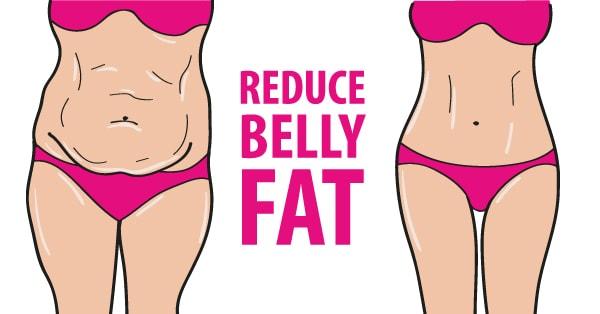
Several studies have highlighted the persuasive evidence that strength and chronic exercises have therapeutic effects and positive impact on the autonomic nervous system [23] and the parameters under its direct regulation, as cardiac output, blood volume, heart rate, cardiac, kidney and pancreatic functions.
Personalised elite training persuades improvement in cardiovascular function, insulin dependent metabolic syndrome, adequate performance of renal and adrenal glands, and thereby contributes to treatment of cardiac, autonomic or metabolic disorders.
Training and exercises also improve mental health by beating depression and stress [24].
- Supervised personal training to maximise functional capacity in people in general population and especially those with autonomic disorders, are therapeutically advisable and best preferable approach towards cure and improvement.
- Contrary to men, exercising women can attain a much greater anatomical and physiological balance towards a healthy living.
This is because where exercises in men focus on increase in muscle/ body mass, women focus on burning extra fat and increasing lean muscle mass leading to slim yet resilient physique.
Role of estrogen in women is not only confined to reproduction, rather estrogen levels equally regulate brain, lung, gastrointestinal functions, body fluid levels and other such vital functions [25].
In this regard, regulating the endogenous levels of oestrogen via physical activity rather than therapeutic measures is always preferable to avoid unwanted side effects.
Few studies have also explored a dose-response effect of aerobic exercise on levels of estrogen in women (age group 18-50) at high risk of breast cancer [26,27].
More over,
High Intensity Interval training (HIIT), Resistance and strength training involving weights are also known to normalise hormonal balance however, however, without supervision these type of exercise are carrying high risks of injuries.
In addition one to one Pilates Personal Training and powerful anti ageing exercises are another excellent alternatives for creating a strong core and gracious tall and lean body.
They elevate mood serving as de-stressors through coordinated movements, breathing techniques, straighten and correct faulty postures and enhance your stamina.
Keen to start to get your hormones in balance?
Claim now your FREE CONSULTATION by clicking on this link, here.
Supervised Programme by Jazz Alessi
In the past few years several reports have evaluated the reduction in estrogen and progesterone levels in women at high risk of breast cancer in response to physical activity [28].
Estrogen and pituitary secretion are also known to play role in physical activity induced Growth hormone release [29].
Therefore, in current scenario supervised training/ customised exercises depending upon the medical state and need of the individual have established themselves as a very promising substitute to hormone replacement therapies in cases of metabolic dysfunctions, arising as a result of reduced/ altered estrogen levels.
Jazz Alessi’s supervised programmes not only offer the best and most adequate nutrition and physical training schedules but also ensure that the clients get benefited from the entire module towards a healthy and a balanced living.
As already stated supervised programme help women to combat extra fat deposits, risks of breast and ovarian cancer, post menopausal issues, high risks of osteoporosis, fertility issues and so on.
Moduling the simplistic physical training into a tool to combat hormonal imbalance towards an ideal healthy living is what Jazz’s customised personal training programme for your specific goals can do.
Customised hormonal balance programme by Jazz Alessi is a definite pro since, in addition to being an elite personal trainer, he is a long term nutritionist and the ideal combination of both, adequate nutrition and physical training is the key to restoration of hormonal balance towards a lean and fit body and healthy lifestyle.
Who is Jazz Alessi and why an elite personal trainer in London will help you
Jazz Alessi is a long term elite personal trainer in London specialised in hormonal imbalances for women who previously could not conceive.
As London’s number one weight loss and anti-ageing expert, Jazz provides customised exercise programmes, bespoke nutrition diet plans, Pilates personal training and unique health rehabilitation techniques using cutting edge evidenced based science to maximising your fitness, longevity, successfully reshaping your body and health.
Jazz Alessi offer the best personal training approach towards maintenance of optimum lifestyle and fitness enriched health.
The long term experience and expertise in the fields of nutrition, physical fitness and injury rehabilitation has made Jazz proficient in targeting the endpoints and health determinants that alongside medical supervision many times can be manipulated by physical activity without major therapeutic interventions.
This makes Jazz one of the best and most trustworthy elite personal trainer in London and anti-ageing lifestyle expert one can look for.
Keen to get your hormones in balance?
Claim now your FREE CONSULTATION by clicking on this link, here.
References:
1. Crain, D. A. et al. Female reproductive disorders: the roles of endocrine-disrupting compounds and developmental timing. Fertil Steril 90, 911-940 (2008).
2. Clark, L. R. et al. Menstrual irregularity from hormonal contraception: a cause of reproductive health concerns in minority adolescent young women. Contraception 74, 214-219 (2006).
3. Al-Nuaim, L. A. The impact of obesity on reproduction in women. Saudi Med J 32, 993-1002 (2011).
4. Hoeger, K. M. Obesity and lifestyle management in polycystic ovary syndrome. Clin Obstet Gynecol 50, 277-294 (2007).
5. Simmons, D. Diabetes and obesity in pregnancy. Best Pract Res Clin Obstet Gynaecol 25, 25-36 (2011).
6. Legler, J. et al. Obesity, diabetes, and associated costs of exposure to endocrine-disrupting chemicals in the European Union. J Clin Endocrinol Metab 100, 1278-1288 (2015).
7. Bao, J. et al. Phthalate concentrations in personal care products and the cumulative exposure to female adults and infants in Shanghai. J Toxicol Environ Health A 78, 325-341 (2015).
8. Schettler, T. Human exposure to phthalates via consumer products. Int J Androl 29, 134-139; discussion 181-135 (2006).
9. Costa, E. M., Spritzer, P. M., Hohl, A. & Bachega, T. A. Effects of endocrine disruptors in the development of the female reproductive tract. Arq Bras Endocrinol Metabol 58, 153-161 (2014).
10. Craig, Z. R., Wang, W. & Flaws, J. A. Endocrine-disrupting chemicals in ovarian function: effects on steroidogenesis, metabolism and nuclear receptor signaling. Reproduction 142, 633-646 (2011).
11. Temelkova-Kurktschiev, T. & Stefanov, T. Lifestyle and genetics in obesity and type 2 diabetes. Exp Clin Endocrinol Diabetes 120, 1-6 (2012).
12. Stefanaki, C. et al. Impact of a mindfulness stress management program on stress, anxiety, depression and quality of life in women with polycystic ovary syndrome: a randomized controlled trial. Stress 18, 57-66 (2015).
13. Stangierski, A. et al. Smoking and endocrine disorders. Przegl Lek 69, 1147-1148 (2012).
14. Schliep, K. C. et al. Alcohol intake, reproductive hormones, and menstrual cycle function: a prospective cohort study. Am J Clin Nutr 102, 933-942 (2015).
15. Matijasevich, A., Santos, I. S. & Barros, F. C. Does caffeine consumption during pregnancy increase the risk of fetal mortality? A literature review. Cad Saude Publica 21, 1676-1684 (2005).
16. Varner, M. W. et al. Association between stillbirth and illicit drug use and smoking during pregnancy. Obstet Gynecol 123, 113-125 (2014).
17. Chavarro, J. E., Rich-Edwards, J. W., Rosner, B. A. & Willett, W. C. Diet and lifestyle in the prevention of ovulatory disorder infertility. Obstet Gynecol 110, 1050-1058 (2007).
18. Fontana, R. & Della Torre, S. The Deep Correlation between Energy Metabolism and Reproduction: A View on the Effects of Nutrition for Women Fertility. Nutrients 8, 87 (2016).
19. Trefts, E., Williams, A. S. & Wasserman, D. H. Exercise and the Regulation of Hepatic Metabolism. Prog Mol Biol Transl Sci 135, 203-225 (2015).
20. Poirier, P. & Despres, J. P. Exercise in weight management of obesity. Cardiol Clin 19, 459-470 (2001).
21. Orio, F. et al. Effects of physical exercise on the female reproductive system. Minerva Endocrinol 38, 305-319 (2013).
22. Uritani, D. et al. Effects of regular exercise and nutritional guidance on body composition, blood pressure, muscle strength and health-related quality of life in community-dwelling Japanese women. Obes Res Clin Pract 7, e155-e163 (2013).
23. Fu, Q. & Levine, B. D. Exercise and the autonomic nervous system. Handb Clin Neurol 117, 147-160 (2013).
24. Okano, A. H. et al. Brain stimulation modulates the autonomic nervous system, rating of perceived exertion and performance during maximal exercise. Br J Sports Med 49, 1213-1218 (2015).
25. Kraemer, R. R., Francois, M. & Castracane, V. D. Estrogen mediation of hormone responses to exercise. Metabolism 61, 1337-1346 (2012).
26. Schmitz, K. H. et al. Dose-response effects of aerobic exercise on estrogen among women at high risk for breast cancer: a randomized controlled trial. Breast Cancer Res Treat 154, 309-318 (2015).
27. Smith, A. J. et al. The effects of aerobic exercise on estrogen metabolism in healthy premenopausal women. Cancer Epidemiol Biomarkers Prev 22, 756-764 (2013).
28. Kossman, D. A. et al. Exercise lowers estrogen and progesterone levels in premenopausal women at high risk of breast cancer. J Appl Physiol (1985) 111, 1687-1693 (2011).
29. Ignacio, D. L. et al. Thyroid hormone and estrogen regulate exercise-induced growth hormone release. PLoS One 10, e0122556 (2015).
Disclaimer: This website and all its content is to be used for information purposes only. This website or any of its content or links to third parties does not diagnose, advise, treat or cure any ailments, illness or disease.
You agree to hold harmless the owner of this site for any action taken on your own without consulting your medical doctor first by using the information on the website for diagnostic, treatment, or any other related purposes. This is not medical advice. If you are suffering from any illness, disease or ailments please contact your doctor first and immediately.



